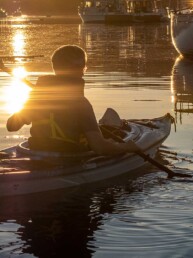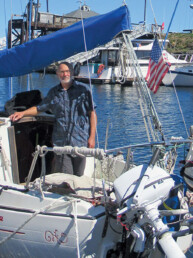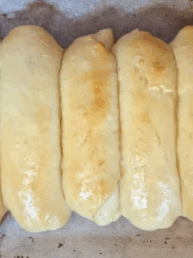
One of the things that we love about boating in the Pacific Northwest is the array of unique vessels that people use to enjoy our local waters. My Boat is the place to share them, and we’re pleased to introduce you to J. Foster Fanning and Catherine Brown, and their 1983 Nauticat 36 ketch-rigged pilothouse motor-sailer, Aarluk. Built in Finland, their Nauticat is homeported at Semiahmoo Marina in Blaine, Washington, where they’ve kept it since buying the boat in September 2022. Perfectly sized for the couple and, ideally suited for cruising the Inside Passage in comfort, they enjoy taking Aarluk to destinations all around the Salish Sea.
Tell us a little about your boating background.
I’m a graduate student from the school of hard knocks and have been a boat owner for 40 years, approximately the same amount of time as my career in fire service. I’m a self-taught sailor with over five thousand coastal water miles and a small amount of bluewater sailing. We now sail an average 50-plus days per year. We are both long term sail club members; Catherine served eight years as secretary with the Rickey Point Sail Club on Lake Roosevelt in northeast Washington, where I was commodore for 10 years. We are also members of the Semiahmoo Marina Yacht Club. Together we’ve worked as part of several delivery crews in local waters and for one 1,000 mile stretch down the Atlantic seaboard.
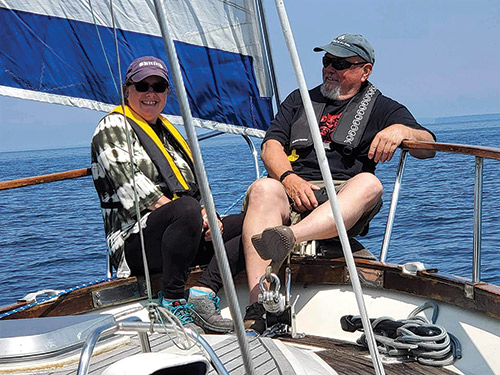
Tell us about your boat’s name.
Aarluk is the Inuit name for orca. Catherine and I have lived and sailed in the Pacific Northwest for a long time and the pilothouse motor-sailer style of sailboat is something I’ve longed for throughout my 40-years as a boat owner. When we succeeded in purchasing this vessel in September of 2022, we embarked on a lengthy dialog pertaining to naming the boat. Humans have been navigating the waters of the Pacific Northwest for thousands of years before European explorers “discovered” this area. We wanted the boat name to reflect that as well as the magical experiences we’ve had in the company of orcas as we’ve explored these waters. Aarluk fits our boat quite nicely.
What other boats have you owned before this one?
While this is my seventh sailing vessel and Catherine’s third, Aarluk is our first full-time water-moored boat. Our previous vessels, Aquila, a 1987 S2 9.2C, and Osprey a Lyle Hess 27 came to us with custom-built trailers that gave us the advantage of sailing on Lake Roosevelt, impinged by the Grand Coulee Dam, and in our coastal salt chuck waters.
Tell us the story of how you found your boat and what makes it special to you.
As mentioned, I’d “kicked tires” on many pilothouse sailing vessels. I even made a few offers on smaller Nauticats and one Fisher 37, but hadn’t succeeded in making the big purchase. The summer after I retired as fire chief, we really looked hard at a number of boats, but nothing came together. Truthfully, it takes a lot of effort to search out boats, negotiate with owners or brokers, travel to view boats, make offers, plan surveys, do research, and so much more. Catherine and I had just agreed that we needed a break from the intense process of boat searches. Then, a week later, a good sailing friend sent me the link to this Nauticat 36 in Vancouver, British Columbia. I looked over the details, called the broker, and discovered the boat owner purchased the boat new and had it shipped from Finland to Vancouver in the early 1980s. I made an offer on the first phone call. I was the first offer. In the next few days our finances came together relatively easily with a good friend and fellow sailor purchasing my S2. Within a month after saying “I was done looking at boats,” I purchased my seventh one. Go figure!
What’s the history of your boat?
Nauticat is known as a family shipyard founded by the Finnish yachtsman and engineer Pentti Siltala in 1961. The shipyard’s history began with the release of the Nauticat 33 in 1961. Since then, the company has built more than 10 models of yachts from 33 to 53 feet. The total circulation was more than 3,000 boats, many of which are perfect for the waters of the Pacific Northwest. The previous owner and his wife were both born in Finland and, like me, worked hard to be able to afford their dream boat; then, as a young engineer assigned to Vancouver, he talked his company into shipping his new boat to Canada’s West Coast. I had the broker invite the owners along for the sea trail and it was great to have them both aboard. They had a wealth of experience, although when they sailed the boat, they did so speaking Finnish, which made the sea trial quite interesting. They were glad to meet us and see that we were true sailors who would cherish the vessel.
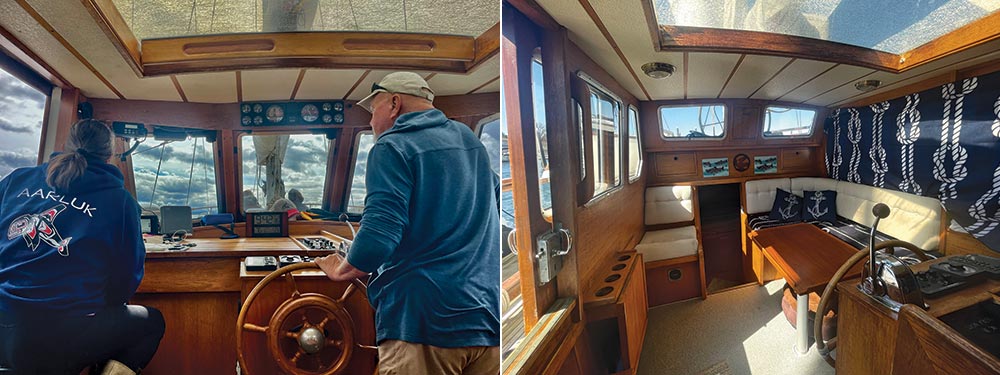
What do you like best about your boat?
The pilothouse! And all the amenities it provides here in the Northwest, especially in the winter or when the weather is nasty. I broke out in laughter the first time we had to use the windshield wipers. That was a wonderful first for us. While we are not racers, we were pleasantly surprised how well this boat sails.
What do you know now about your boat that you wish you’d known when you bought it? Would that have changed your mind?
The rigging survey I commissioned was a complete bust. There were a few masthead problems that resulted in us hiring another technician from Cascadian Yachts who got us in touch with a great sailmaker and rigger, Don Yager of Yager Sails. The result was a new ProFurl 320, which makes sailhandling and sailing much easier. Of course, while we were at it, I upgraded all of the running rigging and feel much better for having done so. I would have purchased the vessel anyway, but negotiated the offer to reflect at least part of this unexpected expenditure.
What’s your favorite story involving your boat?
In our S2 and previous Lyle Hess designed 27 footer, Catherine had to stand on the settee to see out of the cabin windows. As we sat below decks, our standard joke was that the whales were all waving to us as they swam by, but we couldn’t see them being stuck so deep below decks much of the time. The pilothouse changes all that. We both have our favorite perches where we can survey our anchorage while enjoying that hot cuppa’ or glass of red wine. Plus, making passages in inclement weather is, well, a bit easier and a lot more comfortable.
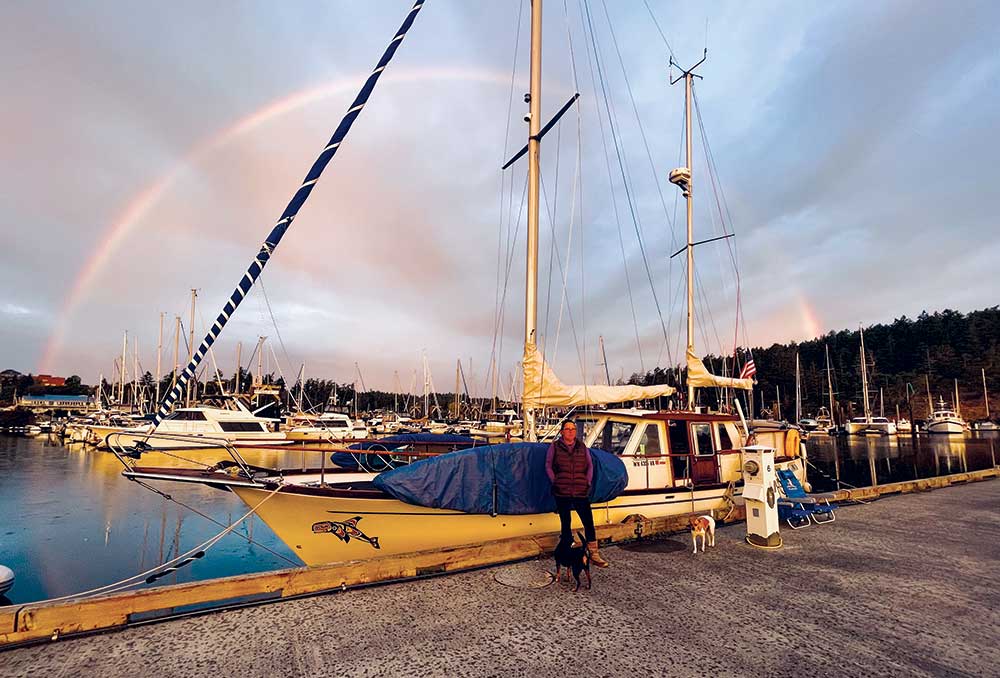
Describe the most challenging situation you’ve experienced on your boat and how it performed.
One of my standard sayings is “All of my vessels have sailed better than I do.” It’s just the nature of the sport. There’s always more to learn. That said, I knew better than to leave our standup paddleboards in their forward racks outside the life rail if the wind was forecast to kick up. Why I didn’t heed my own advice I’ll never know, but there we were in the northern reaches of Rosario Strait with a northerly building and blowing at 20-plus knots. Aarluk had been running under full sail but in the freshening breeze I decided to drop the mainsail. All my “knowledge” regarding sailing a ketch was, up until that time, book-learned or light air sailing. With the main down and the breeze continuing to freshen, spray was still slapping over the rail and onto the pilothouse top. The paddleboards were starting to take a pounding, which, of course, wasn’t good for the wooden capped life rail. Mistake number two was reefing the headsail but not the mizzen. Instantly the mizzen was overpowered, causing the boat to roundup with excessive weather-helm, and the pounding got worse. It was time to heave-to and restart the process. Exercising Plan C, we did much better after that.
Where do you plan to take your boat? Do you have a dream destination?
We have cousins who are lifelong residents and boaters in Westport, Washington. Once our primary “to-do list” is complete, I hope to get a taste of the ocean on Aarluk with a run down the coast for a visit. That will be the precursor to a circumnavigation of Vancouver Island or a run to Alaska, whichever comes first.
If someone gave you $20,000 that you could only spend on your boat, what would you do with it and why?
After the case of wine was stowed, the remainder of the funds would go towards an aft arch with davits, additional solar panels, and a teak swim platform.

If you could have any other boat, what would it be and why?
A Nauticat 38. Because our slip in Semiahmoo will accommodate a 44 footer!
What didn’t we ask you about your boat that you wish we had?
How beautiful her wooden cabins are. How near perfect the European joinery is. How cozy and stable she feels. How comfortable it is to spend long stretches of time aboard. Cheers, and smooth sailing!
• Want to share the story of your boat in a future column? Contact andy@48north.com
Editor
48° North Editors are committed to telling the best stories from the world of Pacific Northwest boating. We live and breathe this stuff, and share your passion for the boat life. Feel free to keep in touch with tips, stories, photos, and feedback at news@48north.com.

